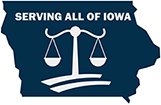Last Updated: 2/22/2024
A motorcycle lacks the crash worthiness and protection of today’s cars. A car has much more weight and mass than a motorcycle. It has a roll cage area, a roof, airbags, and seatbelts. It is also more stable because it has four wheels. Also, because of its size, a car is easier to see than a motorcycle. However, what a motorcycle sacrifices in these areas is somewhat offset by its ability to stop and turn quickly when necessary if the driver has been properly trained.
How Can I Prevent a Crash From Happening?
- Training- 92% of motorcycle riders involved in accidents are essential without training. They often are self-taught or learned from family or friends. Training is the #1 thing that you can do to reduce your chances of both being in a crash and the severity of injuries if you are in a crash.
- Do Not Drink and Drive- Almost one-half of all fatal motorcycle crashes involve alcohol use by the motorcycle rider.
- Speed- A significant portion of motorcycle crashes are caused by excessive speed. Whether it is driving around a corner too fast or driving above the speed limit and not having enough distance to stop when a car pulls out in front of you, excessive speed should be avoided.
- Proper Maintenance- While only 3% of motorcycle crashes involve vehicle failures, most of them are single vehicle accidents where the rider lost control because of a flat tire. Losing control at high speed often results in injuries to the rider.
Here are Some Specific Examples and How You May Prevent a Crash
In 1981 there was a motorcycle safety study called the Hurt Report. The report made findings and suggested ways to help motorcycle riders avoid crashes. Here are some examples:
 Another Driver Turns Left In Front Of You- This is the most common type of motorcycle crash. Another driver either fails to see you or misjudges your speed while turning in front of you at an intersection. It may be because the other driver is distracted, on their cell phone or is not looking for motorcycles. Regardless, here are some tips to avoid it:
Another Driver Turns Left In Front Of You- This is the most common type of motorcycle crash. Another driver either fails to see you or misjudges your speed while turning in front of you at an intersection. It may be because the other driver is distracted, on their cell phone or is not looking for motorcycles. Regardless, here are some tips to avoid it:
1. Approach intersections with caution and look for signs that a driver may turn in front of you. This can include a gap in traffic, a driveway or parking lot. Look at the wheels of the vehicle, not the vehicle, as they will give you the first sign that a vehicle is moving. As you approach an intersection slow down, get ready to apply your brakes and be prepared to take evasive action.
2. You should avoid laying your bike down because your best chance of avoiding injury is reducing your speed as much as possible prior to impact. This is best done by keeping the bike upright and applying both brakes. However, make sure you know how to properly use your front brake because it is often the most difficult skill to learn in riding a motorcycle. Even reducing your speed by 10 to 20 miles per hour may make the difference between going home with bruises and not going home at all.
 A Car Changes Lanes Into You- You are riding in traffic and another vehicle moves towards you in your lane. Remember, a motorcycle can easily be in the blind spot of another driver and people are not always looking for motorcycles. Here are some tips to avoid it:
A Car Changes Lanes Into You- You are riding in traffic and another vehicle moves towards you in your lane. Remember, a motorcycle can easily be in the blind spot of another driver and people are not always looking for motorcycles. Here are some tips to avoid it:
1. Be aware of where blind spots lie and spend as little time in them as possible. If you can see a driver's eyes in their mirrors, then they have the ability to see you too.
2. Be extra careful in situations where vehicles may be changing lanes such as when traffic slows down in one lane.
3. Look for signs that a driver may be changing lanes like turn signals, a vehicle moving within its own lane and a driver's head moving to check mirrors.
.jpg) A Car Hits You From Behind- You come to a stop waiting at a red light or a stop sign and the driver behind you does not see that traffic is stopped and slams into the back of your motorcycle. This may be a "fender bender" if you were driving a car, but it can kill a motorcyclist. Here are some tips to avoid it:
A Car Hits You From Behind- You come to a stop waiting at a red light or a stop sign and the driver behind you does not see that traffic is stopped and slams into the back of your motorcycle. This may be a "fender bender" if you were driving a car, but it can kill a motorcyclist. Here are some tips to avoid it:
1. If your motorcycle does not already have them, you should consider installing brake lights that flash as you apply the brakes.
2. You should stop your motorcycle towards the side of the center of a lane, keep your motorcycle in gear and your right hand near the throttle. You should pay attention to vehicles approaching from behind you and be prepared to move if a vehicle is not stopping.
Should I Wear a Helmet?
Iowa is one of the few states in which you have the right to not wear a helmet. Although it may be more fun to ride without a helmet, you should make an informed decision about whether to wear one. Statistics show that a helmet is the most important safety device you have. Motorcycle helmets have a hard outer shell that protects the brain and distributes the force of an impact. Also, new helmets have an inner liner that also absorbs the force of an impact. Wearing a helmet significantly reduces the chance of sustaining a disabling or deadly brain injury. Also, if you are wearing a helmet, make sure you are wearing one that meets federal safety standards. More information on helmets can be found at the National Highway Traffic Safety Administration (NHTSA) website. Also, keep in mind that if you are leaving the state of Iowa that most states require the use of motorcycle helmets.
If you or a loved one has been injured in a motorcycle accident we are here to help you as we offer a book about Iowa motorcycle accidents at no cost, risk or obligation. To order your copy go to MotorcycleAccidentBook.com or Call Now 641-792-3595. Iowa personal injury attorney Corey Walker offers his Iowa motorcycle accident book at no cost because since 1997 he has seen too many hard working Iowans from Des Moines, Newton, and throughout the state of Iowa hurt in motorcycle accidents make mistakes which cost them thousand of dollars. Iowans hurt in motorcycle accidents are beginning to realize that the insurance company is not there to help them and that they should learn about Iowa laws. Finally, there is a book about Iowa motorcycle accidents that you can review in the comfort of your own home with no risk or pressure. For immediate assistance call (641) 792-3595 and ask to speak with one of our personal injury attorneys.


